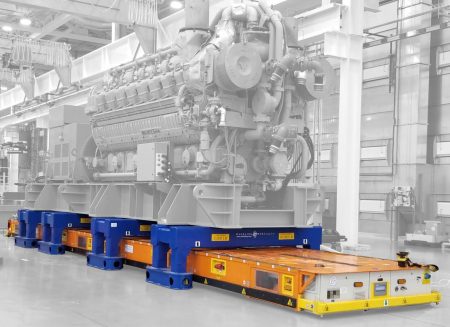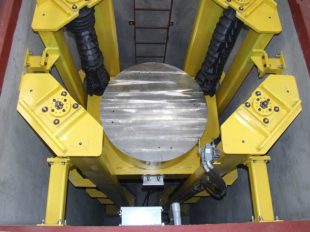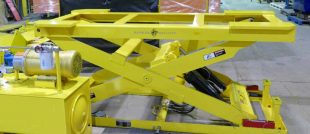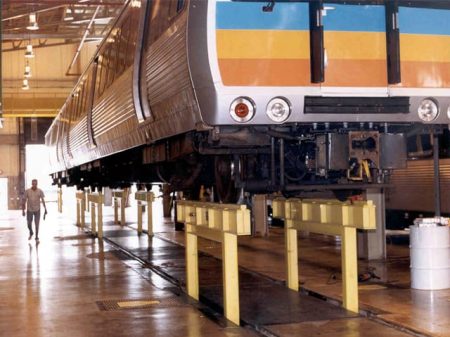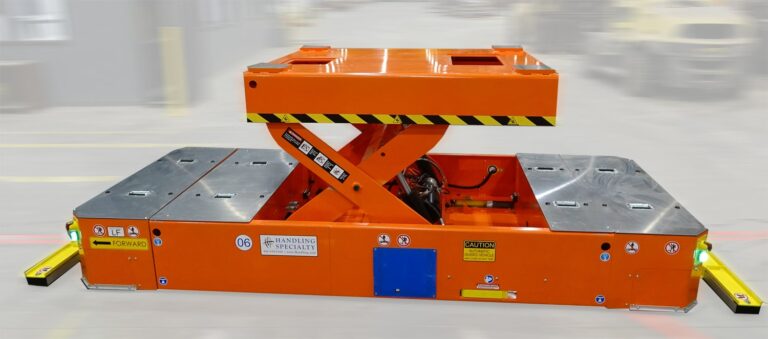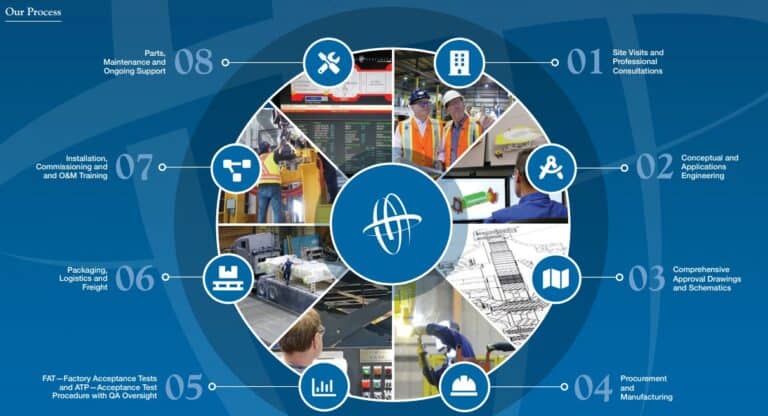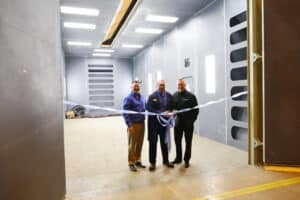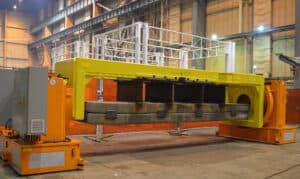Handling Specialty has been designing and manufacturing Custom material handling systems for more than fifty years. When approached by our client in Waukesha, Wisconsin, concerning their project in Welland, Ontario, Canada, to design flexible, robust, reliable and safe production assembly systems, we eagerly accepted the challenge.
The 450,000-square-foot greenfield facility, created to assemble massive internal combustion engines employed in power generation markets, was designed with LEED certification in mind. Paired with Handling Specialty’s safety-inspired engineering for multiple equipment designs, this project quickly became the one to watch. Within the Welland factory, our client assembles a wide range of engine models, which require highly flexible equipment built to accommodate varying dimensions and weight capacities.
In this particular case study, the client was supplied with a number of custom-engineered material handling systems to suit the end user’s stringent production requirements. This included two (2) lift/rollover stations, thirteen (13) custom personnel lifts, two (2) engine lift systems, eight (8) large capacity engine transporters, four (4) fixed position work platforms and a variety of specialized fixtures and tooling. The lift/rollover stations and engine lift systems were rated for a capacity of from 15 to 100 tons, and two (2) of the engine transporters have a carrying capacity of 50 tons. The engine transporters can be operated in tandem mode to offer a capacity of 100 tons to lift and move both an engine and gen-set. Specialized tooling for the engine transporters includes three types of engine stands for the small and large engine assembly line, as well as paint booth stands. All of these systems work together to form a flexible, robust and reliable assembly system.

The assembly process begins when the engine block is loaded onto one of the engine transporters from the adjacent machining centre. The transporter is controlled by an operator via a handheld, wireless remote control pendant. The transporters are highly flexible and offer Omni-direction motion, crabbing, and vertical lift capabilities. These units are DC powered, equipped with opportunity charging features and do not rely on tethered air or power connections. The transporter delivers the engine block from the machining centre to one of the lift/rollover stations and accurately moves the block into position. Once properly positioned inside the lift/rollover station, production technicians secure the engine block at both ends to specialized tooling adapters that provide the mounting interface to the lift/rollover station. These engine adapters are each designed to work with a range of engine models. The lift/rollover stations are electro-mechanically actuated and allow for the engine to be positioned at the correct orientation and elevation for assembly operations. The assembly technician can raise and lower the engine as well as rotate it 360 degrees, ensuring a safe and ergonomic working interface, all without the use of overhead cranes.
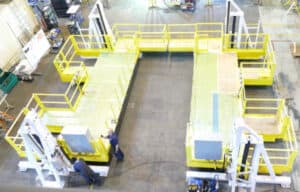
The next step in the assembly process involves the lift/rollover station placing the partially completed engine onto the final assembly fixtures. Once the engine is properly seated in the final assembly fixture, the engine transporter positions the engine at the beginning of the final assembly line. In the final assembly line, the transporters employ an automatic guidance system to navigate a pre-planned route along a painted path on the floor. The final assembly line consists of a number of progressive-build work cells as the transporter moves the engine from station to station. When in position at each work cell, the transporter stops between two (2) electro-mechanically actuated personnel lifts. These personnel lifts are designed to be positioned at the correct elevation for assembly operations and are equipped with telescoping platform sliders along the product side to minimize any gaps between the lift and the engine. As with the lift/rollover stations, the personnel lifts are designed to contribute to a safe, reliable and ergonomic approach to the assembly process. The personnel lifts are provided with full perimeter machine guarding, drawbridge walkways, allowing personnel to walk from one lift to another, and articulating staircases for access. Operator controls are provided via feature-rich, touch screen HMI’s and the lifts are equipped with parts cart docking areas, thereby eliminating the need for overhead cranes once more.
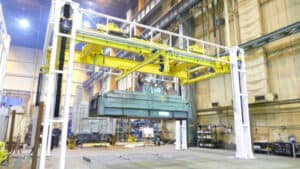
Once the engines have been moved through the various assembly work cells, the transporters then deliver the engines to one of the two engine rig/de-rig cells. Each of the rig/de-rig cells is equipped with an electro-mechanical engine lift system and personnel access platforms. The engine lift systems are designed to allow production technicians to transfer the engine from the final assembly fixtures to the engine test saddles. The engine lift system also provides vertical positioning of the engine for ergonomic considerations without the use of an overhead crane. In the rig/de-rig cell, the operators complete any last assembly tasks and prepare the engine for functional testing operations. Once the engine is fully prepped, the transporter moves the engine into the test cell. During the test cell loading process, the transporter again employs its automatic guidance system from the rig/de-rig cell to the test cell. This process uses an optical guidance sensor and precision locating by way of a separate laser distance sensing feature. Once the testing is complete, the reverse process is employed to move the engines back to the rig/de-rig cell. The engine will be put through a series of final inspection operations, test equipment will be removed, and the engine will be cleaned of any fluids. The engine lift system then transfers the engine from the engine test saddles to the engine paint stands. The transporter then delivers the engine to the finishing systems, where they are sprayed and made ready for shipping.
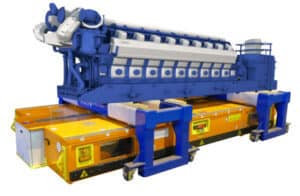
Handling Specialty was not only responsible for the design/build of these custom systems but also took on the full installation, commissioning and functional site testing. The Handling Specialty professional services team provides comprehensive, onsite operator and maintenance as well as spare parts and ongoing technical support. Projects of this nature clearly demonstrate Handling Specialty’s capabilities, commitment to success and long-term client relationships.
To contact Handling Specialty concerning your next BIG project, call or email Mike Roper, Sales Manager.

